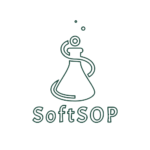In the contemporary food industry, ensuring the safety and quality of products is paramount. A pivotal element in achieving this is the Safe Quality Food (SQF) Management Policy Statement. This document serves as a formal declaration of an organization’s commitment to maintaining high standards in food safety and quality, aligning with the SQF Code’s requirements.
The Role of the SQF Management Policy Statement
The SQF Management Policy Statement articulates an organization’s dedication to producing safe, quality food products. It outlines the company’s objectives concerning food safety and quality, detailing how these goals will be achieved and maintained. This policy is not merely a procedural formality but a strategic tool that guides the organization’s operations and culture towards continuous improvement in food safety and quality.
Key Components of the Policy Statement
- Commitment to Food Safety and Quality: The policy should clearly state the organization’s commitment to producing safe and high-quality food products. This includes adherence to Good Manufacturing Practices (GMPs), Hazard Analysis Critical Control Point (HACCP) principles, and other relevant standards.
- Regulatory Compliance: It is essential that the policy reflects the organization’s commitment to comply with all applicable food safety regulations, including local, state, and federal laws. This ensures that the organization meets or exceeds regulatory requirements.
- Roles and Responsibilities: The policy should define the roles and responsibilities of management, employees, contractors, and suppliers in maintaining food safety and quality. This fosters accountability and ensures that all stakeholders are aligned with the organization’s objectives.
- Continuous Improvement: A commitment to continuous improvement is vital. The policy should emphasize the organization’s dedication to regularly reviewing and enhancing food safety and quality practices to adapt to new challenges and opportunities.
- Employee Engagement and Training: The policy should highlight the importance of training and engaging employees in food safety and quality initiatives. Well-trained employees are crucial in identifying potential hazards and implementing corrective actions effectively.
- Customer and Supplier Relations: The policy should address the organization’s approach to collaborating with customers and suppliers to ensure that food safety and quality standards are upheld throughout the supply chain.
Implementing the Policy Statement
Creating a policy statement is only the first step. For effective implementation, the organization must integrate the policy into its daily operations. This involves:
- Communication: Ensuring that the policy is communicated effectively to all employees, contractors, and suppliers. This can be achieved through training sessions, meetings, and accessible documentation.
- Integration with Operational Procedures: Aligning the policy with existing Standard Operating Procedures (SOPs), HACCP plans, and other operational documents to ensure consistency and compliance.
- Monitoring and Auditing: Regularly monitoring and auditing practices to verify adherence to the policy. This helps identify areas for improvement and ensures that the policy remains relevant and effective.
- Review and Revision: Periodically reviewing and, if necessary, revising the policy to reflect changes in regulations, industry standards, or organizational objectives.
Benefits of a Robust SQF Management Policy Statement
A well-crafted and effectively implemented SQF Management Policy Statement offers several benefits:
- Enhanced Food Safety: By clearly defining food safety objectives and responsibilities, the policy helps in preventing food safety incidents and ensuring product integrity.
- Operational Efficiency: A structured approach to food safety and quality management can lead to more efficient operations, reducing waste and improving productivity.
- Regulatory Compliance: Demonstrating a commitment to regulatory compliance can facilitate smoother inspections and audits, reducing the risk of non-compliance penalties.
- Customer Trust: Upholding high standards in food safety and quality enhances customer trust and satisfaction, which can lead to increased business opportunities.
- Employee Morale: Engaging employees in food safety and quality initiatives fosters a sense of responsibility and pride, leading to improved morale and performance.
Conclusion
The SQF Management Policy Statement is a critical component in the food industry’s commitment to safety and quality. It provides a clear framework for organizations to align their operations, culture, and objectives towards achieving and maintaining high standards in food safety and quality. Through effective implementation and continuous improvement, organizations can ensure the delivery of safe, high-quality food products to consumers, thereby safeguarding public health and enhancing business success.
References
- Safe Quality Food Institute. (2021). SQF Code, Edition 8.1 – SQF System Elements for Manufacturing Guidance Document. Retrieved from https://www.sqfi.com/docs/sqfilibraries/code-documents/guidance-documents/edition-8.1/mod-2-manufacturing-guidance-with-cover.pdf
- Registrar Corp. (2021). SQF and Management Commitment: The Foundation of a Food Safety System. Retrieved from https://www.registrarcorp.com/blog/food-beverage/food-safety/sqf-management-commitment/
- SQF Institute. (2021). Tip Sheet 4: Management Commitment. Retrieved from https://www.sqfi.com/docs/sqfilibraries/code-documents/tip-sheets/tip-sheet-4-management-commitment.pdf
- Alchemy Systems. (2021). SQF Edition 9 is Live – 6 New Requirements for Management. Retrieved from https://blog.alchemysystems.com/sqf-edition-9-is-live-6-new-requirements-for-management/
- QIMA/WQS. (2021). SQF Food Safety Fundamentals: Complete Guide. Retrieved from https://blog.qima.com/sqf/sqf-food-safety-fundamentals-guide

